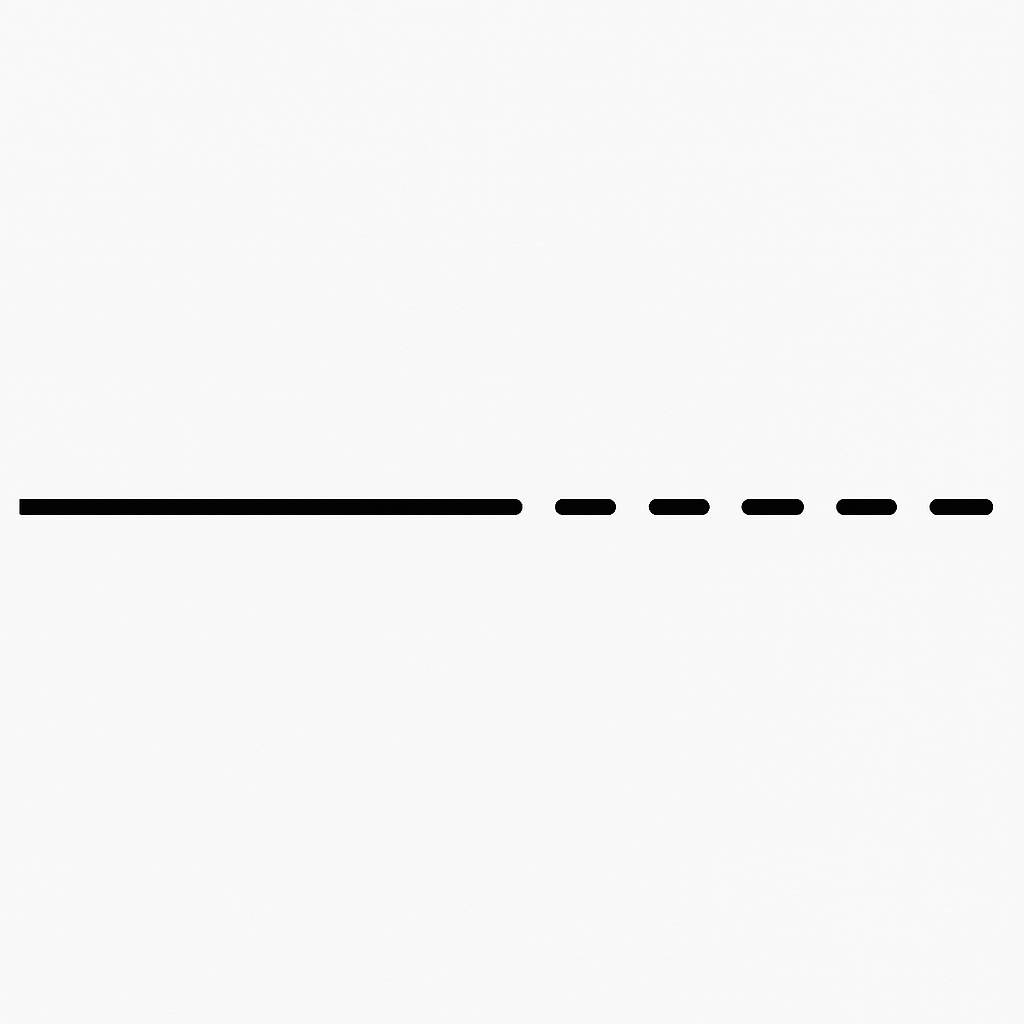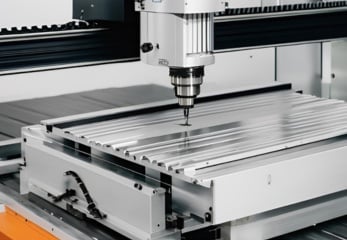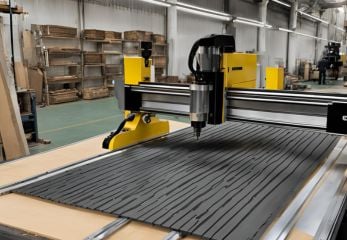Ready to take your 3D printing skills to the next level? Look no further! In this article, we will show you how to unlock the power of 3D printing by converting F3D files to STL like a pro. Whether you’re a hobbyist, designer, or entrepreneur, mastering this skill is essential for bringing your ideas to life.
Converting files from F3D to STL format is a game-changer in the world of 3D printing. STL files are widely supported by different 3D printing software and devices, making them the go-to format for creating physical objects from virtual designs. By converting your F3D files to STL, you open up a world of possibilities and ensure compatibility with a wide range of printers.
But don’t worry, you don’t need to be a tech wizard to accomplish this. We will guide you through the process step-by-step, sharing expert tips and tricks along the way. So, get ready to optimize your designs, streamline your workflow, and elevate your 3D printing game. Let’s dive in and unlock the true potential of 3D printing!
Understanding the STL file format
The STL (Standard Tessellation Language) file format is a widely-used standard in the world of 3D printing. It is a simple and straightforward file format that represents 3D objects by describing their surface geometry using a series of triangles. STL files are essentially a collection of these triangular facets, each defined by three vertices, that collectively describe the shape of the 3D object.
The simplicity of the STL format makes it a popular choice for 3D printing, as it is easily understood and processed by a wide range of 3D printing software and hardware. Unlike more complex file formats that store additional information such as color, texture, or material properties, STL files focus solely on the geometric representation of the object, making them lightweight and efficient to work with.
One of the key advantages of the STL format is its compatibility across different 3D modeling and printing software. Whether you’re using CAD (Computer-Aided Design) tools, slicing software, or 3D printing platforms, the STL format serves as a common language that allows for seamless file exchange and integration. This makes it an essential component in the 3D printing workflow, ensuring that your digital designs can be successfully translated into physical objects.
Benefits of converting F3D files to STL
Converting your F3D (Fusion 360) files to the STL format offers numerous benefits that can significantly enhance your 3D printing experience. Here are some of the key advantages:
Compatibility: STL is the de facto standard file format for 3D printing, supported by a wide range of 3D printing software and hardware. By converting your F3D files to STL, you ensure that your designs can be easily imported and processed by various 3D printing tools, making your workflow more efficient and versatile.
File size reduction: F3D files, being a proprietary format, tend to be larger in size compared to the more compact STL format. By converting to STL, you can significantly reduce the file size, making it easier to store, share, and manage your 3D models. This is particularly beneficial when working with complex designs or when dealing with file storage or transfer limitations.
Improved performance: The simplified geometry of STL files often leads to faster processing and slicing times in 3D printing software. This can result in quicker print preparation and ultimately, faster printing times for your 3D objects. This efficiency boost is especially valuable when working on large or intricate projects.
Standardized workflow: The widespread adoption of the STL format means that you can seamlessly integrate your 3D printing workflow with a variety of tools and services. This allows for better collaboration, file sharing, and access to a broader ecosystem of 3D printing resources and services.
How to convert F3D files to STL
Converting your F3D files to the STL format is a straightforward process that can be accomplished using a variety of software options. In this section, we’ll explore the different methods and tools available for this conversion.
Software options for converting F3D files to STL
- Autodesk Fusion 360: As the native software for creating F3D files, Fusion 360 offers a built-in feature to export your designs directly to the STL format. This is often the most convenient and recommended method, as it ensures that the conversion process is seamless and maintains the integrity of your 3D model.
- Third-party CAD software: If you’re not using Fusion 360, there are other CAD (Computer-Aided Design) software options that can handle the conversion from F3D to STL. Programs like SolidWorks, CATIA, and FreeCAD all have the capability to import F3D files and export them as STL.
- Online conversion tools: For those who prefer a more streamlined approach, there are various online conversion tools available that can handle the F3D to STL conversion process. These web-based applications allow you to upload your F3D file, and they’ll generate the corresponding STL file for you to download.
- Command-line tools: If you’re comfortable with the command line, there are also specialized tools like MeshLab and FreeCAD that offer command-line options for converting F3D files to STL. These can be particularly useful for automating the conversion process or integrating it into your existing workflows.
Regardless of the software option you choose, the general process of converting F3D to STL remains similar. In the next section, we’ll dive deeper into a step-by-step guide to help you navigate the conversion process with confidence.
Step-by-step guide to converting F3D files to STL
- Prepare your F3D file: Before starting the conversion process, ensure that your F3D file is up-to-date and ready for export. This may involve finalizing your 3D model, checking for any errors or inconsistencies, and making any necessary adjustments.
- Choose your conversion method: Depending on your software preference and workflow, select the appropriate method for converting your F3D file to STL. This could be using the built-in export feature in Autodesk Fusion 360, importing the F3D file into a third-party CAD software, or utilizing an online conversion tool.
- Export the F3D file to STL format: Once you’ve chosen your conversion method, locate the export or save as option in your software and select the STL file format. Depending on the software, you may be presented with additional options, such as setting the units, resolution, or other export settings.
- Review the exported STL file: After the conversion is complete, open the generated STL file to ensure that the 3D model has been accurately translated. Check for any visual discrepancies, missing features, or issues with the file’s integrity.
- Optimize the STL file (if necessary): Depending on the complexity of your 3D model and the conversion process, you may need to perform some additional optimization steps. This could involve using 3D modeling software to clean up the mesh, remove any unwanted artifacts, or improve the overall quality of the STL file.
- Save and store the STL file: Once you’re satisfied with the converted STL file, save it in a location that’s easily accessible for your future 3D printing projects. Consider organizing your files in a logical manner to streamline your workflow.
By following this step-by-step guide, you’ll be able to efficiently convert your F3D files to the STL format, ensuring that your 3D designs are compatible with a wide range of 3D printing software and hardware.
Troubleshooting common issues during the conversion process
While the process of converting F3D files to STL is generally straightforward, you may encounter some common issues along the way. In this section, we’ll address a few of the most common problems and provide guidance on how to resolve them.
- File corruption or data loss: Occasionally, the conversion process may result in corrupted or incomplete STL files. This can happen due to various reasons, such as software compatibility issues, file size limitations, or problems with the original F3D file. If you encounter this issue, try the conversion process again, ensuring that you’re using the latest software versions and that your F3D file is not corrupted.
- Geometric inaccuracies: Sometimes, the converted STL file may not accurately represent the original 3D model. This can manifest as missing features, distorted shapes, or inconsistencies in the mesh. To address this, you can try adjusting the export settings, such as increasing the resolution or modifying the faceting parameters. Additionally, using a 3D modeling software to clean up and optimize the STL file can help improve its accuracy.
- Manifold issues: A common problem with STL files is the presence of non-manifold geometry, which can cause issues during the 3D printing process. Non-manifold geometry refers to areas where the surface of the 3D model is not properly closed or connected. To resolve this, you can use 3D modeling software to identify and fix any non-manifold issues in the STL file.
- File size limitations: As mentioned earlier, STL files tend to be smaller in size compared to F3D files. However, for complex 3D models, the STL file size can still become quite large, potentially causing problems during file transfer or slicing. In such cases, you may need to explore techniques like mesh decimation or file compression to reduce the STL file size without compromising the model’s quality.
- Software compatibility: While STL is a widely-supported file format, there may be instances where specific 3D printing software or hardware does not recognize or handle the converted STL file correctly. If you encounter such issues, try using a different software or conversion method, or reach out to the software/hardware manufacturer for guidance.
By being aware of these common issues and having the necessary troubleshooting skills, you’ll be better equipped to overcome any challenges that arise during the F3D to STL conversion process.
Best practices for successful F3D to STL conversion
To ensure a seamless and successful conversion from F3D to STL, consider the following best practices:
- Optimize your F3D file: Before starting the conversion process, take the time to optimize your F3D file. This may involve simplifying the geometry, removing unnecessary features, and ensuring that the model is watertight and manifold. A well-prepared F3D file will result in a higher-quality STL output.
- Choose the appropriate export settings: When exporting your F3D file to STL, pay close attention to the export settings. Factors like resolution, faceting, and units can significantly impact the quality and accuracy of the converted STL file. Experiment with different settings to find the optimal balance between file size and model fidelity.
- Utilize 3D modeling software for post-processing: Even after the initial conversion, you may need to use 3D modeling software to further refine and optimize the STL file. Tools like MeshLab, Blender, or Autodesk Meshmixer can help you identify and fix any issues, such as non-manifold geometry, surface defects, or unwanted artifacts.
- Maintain a versioned backup: As you work through the conversion process, be sure to maintain a versioned backup of your F3D and STL files. This will allow you to revert to earlier versions if needed and provide a safety net in case of any file corruption or data loss.
- Integrate the conversion into your workflow: Consider automating or streamlining the F3D to STL conversion process, especially if you find yourself performing this task frequently. This could involve creating custom scripts, using command-line tools, or integrating the conversion into your 3D printing software.
- Test and validate the converted STL file: Before proceeding with 3D printing, always test and validate the converted STL file. Import it into your 3D printing software, check for any issues, and perform a test print to ensure that the final output matches your expectations.
By following these best practices, you’ll be able to consistently produce high-quality STL files from your F3D designs, optimizing your 3D printing workflow and ensuring successful outcomes.
Applications of STL files in 3D printing
The STL file format is the backbone of the 3D printing industry, enabling the conversion of digital designs into physical objects. Its widespread adoption and compatibility with a vast array of 3D printing software and hardware make it an essential component in the 3D printing ecosystem. Let’s explore some of the key applications of STL files in the world of 3D printing:
- Rapid prototyping: STL files are widely used in the rapid prototyping process, allowing designers, engineers, and makers to quickly transform their digital concepts into tangible models. This accelerates the design iteration and testing phases, enabling faster product development cycles.
- Additive manufacturing: The STL format is the primary file type used in additive manufacturing processes, such as FDM (Fused Deposition Modeling), SLA (Stereolithography), and SLS (Selective Laser Sintering). 3D printing software utilizes the STL file to generate the necessary instructions for the printer to create the physical object.
- 3D scanning and reverse engineering: When 3D scanning physical objects, the resulting data is often exported as an STL file, allowing for the digital representation of the scanned item. This STL file can then be used for reverse engineering, modification, or 3D printing of the original object.
- Medical applications: In the medical field, STL files play a crucial role in the creation of custom prosthetics, implants, and surgical guides. These personalized 3D printed devices are designed using 3D modeling software and then converted to STL format for manufacturing.
- Educational and hobbyist use: The accessibility and compatibility of the STL format make it a popular choice for 3D printing enthusiasts, hobbyists, and educational institutions. Students and makers can easily share, modify, and 3D print STL files to bring their creative ideas to life.
- Industrial and manufacturing applications: STL files are extensively used in industrial and manufacturing settings, where 3D printing is employed for the production of custom tools, jigs, fixtures, and even end-use parts. The flexibility and speed of 3D printing, enabled by the STL format, are invaluable in these applications.
By understanding the versatility and widespread adoption of the STL file format, you can unlock the true potential of 3D printing and seamlessly integrate it into your personal, educational, or professional workflows.
Conclusion and final thoughts
In the ever-evolving world of 3D printing, the ability to convert F3D files to STL format is a crucial skill that can unlock a world of possibilities. By mastering this technique, you’ll be able to streamline your 3D printing workflow, ensure compatibility with a wide range of software and hardware, and bring your digital designs to life with greater efficiency and precision.
Throughout this article, we’ve explored the benefits of the STL file format, the various software options available for conversion, and a step-by-step guide to help you navigate the process. We’ve also addressed common troubleshooting issues and shared best practices to ensure successful F3D to STL conversions.
As you continue on your 3D printing journey, remember that the STL format is not just a technical requirement, but a powerful tool that can elevate your creative and professional endeavors. Whether you’re a hobbyist, designer, or entrepreneur, the ability to convert and work with STL files will open up new avenues for innovation, collaboration, and the realization of your 3D printing dreams.
So, embrace the power of 3D printing, and let the conversion from F3D to STL be the first step in your journey to unlocking the full potential of this transformative technology. Happy 3D printing!





